Species: Difference between revisions
No edit summary |
better species lore |
||
| Line 1: | Line 1: | ||
Over the centuries, the human race has expanded its reach across the galaxy, establishing colonies, space stations, and outposts in distant star systems. During this time, humans encountered a wide variety of sapient species, some of whom were initially hostile, while others sought cooperation for mutual survival. Among these species, certain ones proved themselves as allies or have joined the UN entirely, often due to shared interests in combating the more dangerous alien and government annexation threats that threatened their respective civilizations. | |||
While many other species remain enigmatic to the [[Marines|UNMC]] and even to the more eccentric corporations like Nanotrasen - still more have enlisted or otherwise joined up to work in positions with every bit of Equal Opportunity as their Human peers. While the path to joining the Corps is no doubt different for each individual, the most common is through subcontracting. | While many other species remain enigmatic to the [[Marines|UNMC]] and even to the more eccentric corporations like Nanotrasen - still more have enlisted or otherwise joined up to work in positions with every bit of Equal Opportunity as their Human peers. While the path to joining the Corps is no doubt different for each individual, the most common is through subcontracting. | ||
[[Nanotrasen (NT)|Nanotrasen]] | [[Nanotrasen (NT)|Nanotrasen]] in particular has been providing vital infrastructure, training, and resources for these species to make the transition into military service. The existence of [[Nanotrasen (NT)|Nanotrasen's]] deep ties to various interspecies diplomacy and military contracts allowed these non-human species to be seen as equals within the UNMC, ensuring that their value as soldiers, scientists, and diplomats was fully realized. In exchange, the UNMC offers assistance with [[Xenonids|alien]] threats. It has been many years since this integration, and relations have been very high between the traditionally human soldiers of the UNMC and their new brothers and sisters. | ||
While many non-human species are drawn into military service through corporate contracts, alliances, or mutual defense pacts, others find their way into the ranks of the UNMC through a more organic and natural route, hailing from planets that are directly governed by the United Nations or their own planets where military service is part of their culture, a requirement for citizenship, or even an economic necessity. For these species, the transition to joining the UNMC military is often seamless, driven by political, social, and military factors, as well as the economic opportunity it provides. In many cases, the military offers a stable job, access to resources, and the chance for personal or societal advancement, particularly for those from struggling or developing worlds where such service provides a reliable source of income, benefits, and career mobility. The combination of these factors makes military service not just a duty, but a means of survival and prosperity for many of these species. | |||
Although some ranks in the military require many years of experience, some of these species perceive their lives much slower than a human, and in most cases mature significantly faster than the average human. This means that species like [[Species#Moth|the Moth]] are likely to get into higher ranking positions much faster than others, as they learn much more in the same amount of time. For example, one year is perceived as 8 for a moth. This doesn't seem to apply to longer-living species however, who seem to gain experience at about the same pace as a human, but live significantly longer. | Although some ranks in the military require many years of experience, some of these species perceive their lives much slower than a human, and in most cases mature significantly faster than the average human. This means that species like [[Species#Moth|the Moth]] are likely to get into higher ranking positions much faster than others, as they learn much more in the same amount of time. For example, one year is perceived as 8 for a moth. This doesn't seem to apply to longer-living species however, who seem to gain experience at about the same pace as a human, but live significantly longer. | ||
Latest revision as of 07:16, 11 February 2025
Over the centuries, the human race has expanded its reach across the galaxy, establishing colonies, space stations, and outposts in distant star systems. During this time, humans encountered a wide variety of sapient species, some of whom were initially hostile, while others sought cooperation for mutual survival. Among these species, certain ones proved themselves as allies or have joined the UN entirely, often due to shared interests in combating the more dangerous alien and government annexation threats that threatened their respective civilizations.
While many other species remain enigmatic to the UNMC and even to the more eccentric corporations like Nanotrasen - still more have enlisted or otherwise joined up to work in positions with every bit of Equal Opportunity as their Human peers. While the path to joining the Corps is no doubt different for each individual, the most common is through subcontracting.
Nanotrasen in particular has been providing vital infrastructure, training, and resources for these species to make the transition into military service. The existence of Nanotrasen's deep ties to various interspecies diplomacy and military contracts allowed these non-human species to be seen as equals within the UNMC, ensuring that their value as soldiers, scientists, and diplomats was fully realized. In exchange, the UNMC offers assistance with alien threats. It has been many years since this integration, and relations have been very high between the traditionally human soldiers of the UNMC and their new brothers and sisters.
While many non-human species are drawn into military service through corporate contracts, alliances, or mutual defense pacts, others find their way into the ranks of the UNMC through a more organic and natural route, hailing from planets that are directly governed by the United Nations or their own planets where military service is part of their culture, a requirement for citizenship, or even an economic necessity. For these species, the transition to joining the UNMC military is often seamless, driven by political, social, and military factors, as well as the economic opportunity it provides. In many cases, the military offers a stable job, access to resources, and the chance for personal or societal advancement, particularly for those from struggling or developing worlds where such service provides a reliable source of income, benefits, and career mobility. The combination of these factors makes military service not just a duty, but a means of survival and prosperity for many of these species.
Although some ranks in the military require many years of experience, some of these species perceive their lives much slower than a human, and in most cases mature significantly faster than the average human. This means that species like the Moth are likely to get into higher ranking positions much faster than others, as they learn much more in the same amount of time. For example, one year is perceived as 8 for a moth. This doesn't seem to apply to longer-living species however, who seem to gain experience at about the same pace as a human, but live significantly longer.
Regardless of what age the species are in human measures of time, the United Nations have decided to mark official documents with their perceived age in relation to humans, based on many years of research on the species within the UN. The UNMC has since been providing officer and military personnel training tailored to each species, significantly improving the effectiveness of the UNMC as a whole.
OOC DISCLAIMER: ALL SPECIES ARE MECHANICALLY IDENTICAL, THE ONLY CURRENT BENEFIT IS A DWARF'S SMALLER SPRITE SIZE. IF YOU PLAY DWARF SPECIFICALLY FOR THAT, YOU ARE A DORK.
Human
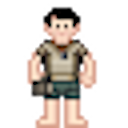
Common Name: Humans
Scientific Name: Homo sapiens
Description: Humans are a highly adaptable, bipedal species from Earth, characterized by diverse physical traits and advanced cognitive abilities.
Planet of Origin: Earth
Average Height: 5'6"
Average Weight: 150 LBS
Average Life Expectancy: 74.8 Years
"Humans aren’t the strongest species, yet their sheer versatility and scrappy resolve make them surprisingly formidable. While others rely on brute strength, it’s the cleverness and adaptability of humanity that has allowed them to rise against the odds and achieve a prominent position on the intergalactic stage."
- Professor Tavi-Aru, Galactic Historic Research Initiative
Moth

Common Name: Moth
Scientific Name: Lepidoptera sapiens
Description: Moths have humanoid forms with elongated limbs and slender bodies. Sporting a pair of wings on their back often featuring delicate patterns. Their large, multifaceted eyes glow in the dark. Fond of luminescent and warm things.
Planet of Origin: Lampérthgyula
Average Height: 5'1
Average Weight: 97 LBS
Average Life Expectancy: 59.2 Years
"Working with moths reveals a profound truth: beauty can often conceal danger. These remarkable creatures became our allies, saving my life in ways I could never have anticipated. Their deeper integration into galactic scene has yielded nothing but benefits for our people."
- Major Is-The-Leader, United Nations Marine CorpsDwarf
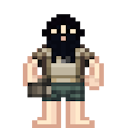
Common Name: Dwarf
Scientific Name: Homo sapiens dwarfus
Description: Dwarves are sturdy humanoids characterized by their stocky builds and strong limbs. They possess thick rugged skin, and are often fond of drink and industry. Promises and Oaths are a major part of dwarven culture, and most would sooner die (or kill) than break either.
Planet of Origin: Valtor Prime
Average Height: 4'5"
Average Weight: 180 LBS
Average Life Expectancy: 150 Years
"Abandoned by our own kin to toil for millennia, these unfortunate beginnings forged us in darkness. Yet it is this very struggle that has shaped our resilience. Dwarves are the strongest, and we shall remain so for millennia."
- Elder Brom Ironfist, Council of the ForgedSlime
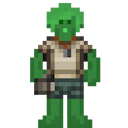
Common Name: Slime
Scientific Name: Non-Newtonian Scalar Mass
Description: Slime people are amorphous beings composed of a viscous, gelatinous substance that shifts and glimmers in a variety of colors. Superficially resembling humans due to them being the first race they contacted, and after having been flooded with an absolutely stupendous amount of media just after inventing the television - adopting a particularly human outline.
Planet of Origin: Cuiria
Average Height: 5'11"
Average Weight: 201 LBS
Average Life Expectancy: 343 Years
"Hey, what did the baby slime say to it's mum?
"We talked about this..."
"Goo-goo!"
"... I'm taking this to the EO office James."
- Excerpt from the hit show 'M.A.C.H'Diona
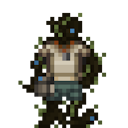
Common Name: Diona
Scientific Name: Photosophont sylvarri
Description: The ambulatory, humanoid and sapient expression of the greater Dionae species. Their plant-like biology lends itself to a slower and more deliberate lifestyle. Diona as individuals are actually gestalt conciousness formed from even smaller Dionae forms called Nymphs.
Planet of Origin: Entsyllnn
Average Height: 5'6
Average Weight: 130 LBS
Average Life Expectancy: 156 Years
"Slow and steady wins the race, eh?"
"Slow and steady is about to punch you in the face."
- Excerpt from the hit show 'M.A.C.H'Felinid
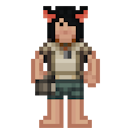
Common Name: Felinid
Scientific Name: Homo sapiens feliinae
Description: Originally of Human stock, Felinids quickly diverged from their sapiens predecessors due to controverial genetic experiments. Of smaller build and more agile than regular humans, but possessing less stamina and overall strength on average.
Planet of Origin: Carlos 2b
Average Height: 5'4
Average Weight: 97 LBS
Average Life Expectancy: 64 Years
"They make great auxiliaries in the scouts, don't get me wrong. But if you think they can't cut it in the rest of the corps I have one bit of advice -
Never try to outstubborn a cat."
- Staff Sergeant Rhett McIndrick, United Nations Marine CorpsArachnid
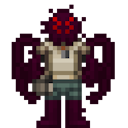
Common Name: Arachnid
Scientific Name: Pseudoarachnae sapiens
Description: Not to be confused with terrestrial arachnids; though they share several similar traits, these exoskeleton clad humanoids posses seemingly primitive but robust biology. Capable of slowing their metabolism and going inert, but nonetheless able to sprint in bursts of terrifying agility and speed.
Planet of Origin: Alpha Tauri I
Average Height: 6'1
Average Weight: 97 LBS
Average Life Expectancy: 62.4 Years
"He's no bug, he's an Arachnid!"
"Ssstrictly speaking I'm a pseudoarachnid..."
"Shut up you nerd, I'm trying to defend your honor here!"
- Excerpt from the hit show 'M.A.C.H'Reptilian
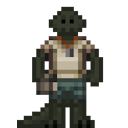
Common Name: Reptilian
Scientific Name: Squamata callidus
Description: Coldblooded but warm to friends those they form tight bonds with, the people of Tizria are perhaps one of the most diverse to be lumped under one species. Reptilians and Humans were mutually the first species to encounter one another on the galactic scene. Cautious at first the reptilians quickly became the one of the most stalwart supporters of galactic integration and unity.
Planet of Origin: Tizria
Average Height: 5'8
Average Weight: 180 LBS
Average Life Expectancy: 80 Years
"No worry friend, I put bonesss just right- If I can find where you left them!"
- Doctor Mends-The-Bones, United Nations Marine CorpsAvali
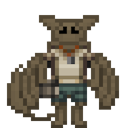
Common Name: Avali
Scientific Name: Avialae avalonicus
Description: Avali are a bipedal and raptor like species from Avalon. Usually seen with many different feather patterns, colors and with a sleek body and bird-like bone structure made for gliding on planets with a less dense atmosphere. Culturally they are also known for their pack-like family structure and tight knit communities.
Planet of Origin: Avalon
Average Height: 5'5"
Average Weight: 86 LBS
Average Life Expectancy: 160 Years
"Avalis were originally found living on many different cold planets in nomadic packs with the largest and most developed assortment of them being found on Avalon which we've subcontracted with to supplement our forces."
- Major Tempestas "Frostclaw" Glacies, United Nations Marine CorpsVulpkanin
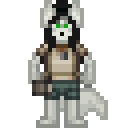
Common Name: Vulpkanin
Scientific Name: Canis captiosus
Description: A species with superficial resemblance to canines, the Vulpkanin originally come from the temperate world of Altam. Much of their history was lost after a disaster stripped the planet of its atmosphere, a calamity the species only survived thanks to early development of space travel, and the soon followed contact with humanity.
Planet of Origin: Altam (currently uninhabitable, undergoing Terraforming)
Average Height: 5'7
Average Weight: 140 LBS
Average Life Expectancy: 70 Years
"Who watches the Watch? That one is easy, Sir, we watch each other."
- Corporal Lena 'Watchdog' Stellansdóttir, MP of the United Nations Marine CorpsRodentia
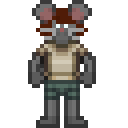
Common Name: Rodentia
Scientific Name: Quisquilia rodens
Description: With no space travel development, it is unclear how the rodentia managed to join the galactic community. Some say they stole a crashed vessel, others say that smugglers brought them off-world. However they did it, they have spread rapidly through the galaxy in a shockingly short time. Rodentia exhibit a wide phenotypic variety, but tend to be small. Eschewing family or clan names, rodentia are instead given descriptive epithets by their communities.
Rodentia of unusual size have been enlisting in the UNMC, but any rumors of a "rat super soldier program" are completely unsubstantiated.
Planet of Origin: Rous
Average Height: 5'
Average Weight: 100 LBS
Average Life Expectancy: 61 Years
"It's a real honor to serve 'ere, capiche? Every day we get new problems to solve, fuggedaboutit. Yous gonna eat that donut?"
- Private Short-legged Lily, Maintenance Technician of the United Nations Marine Corps
